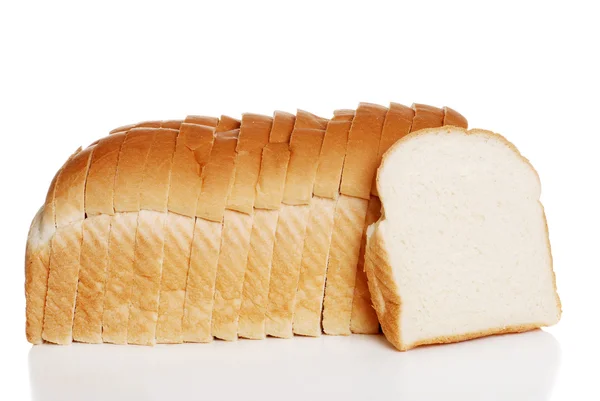Find out ” #1 Bread Type Dangerous To Health When You Eat It” Bread has been a staple food for centuries, enjoyed by people around the world. It comes in various types and flavors, providing us with a convenient and versatile option for meals. Many people often opt for it during breakfast. However, not all bread is created equal when it comes to its impact on our health. Among many types of bread, processed white bread is the unhealthiest to eat. For example in Nigeria, many white breads are not healthy to consume. Continue reading to learn all about the #1 bread type that poses risks to our well-being when consumed excessively.
The Problem with Processed White Bread

-
Lack of Nutritional Value
One of the primary concerns with processed white bread is its lack of nutritional value. During the refining process, the bran and germ, which contain essential nutrients such as fiber, vitamins, and minerals, are removed. What remains is the starchy endosperm, devoid of most beneficial components.
-
High Glycemic Index
Processed white bread also has a high glycemic index (GI). According to a study published in the journal Diabetes Care, white bread has a high glycemic index (GI) of 75. This means that it quickly raises blood sugar levels, leading to a sudden spike in energy followed by a rapid drop, causing hunger cravings and potential mood swings. Continuous consumption of high GI foods can contribute to insulin resistance and an increased risk of developing type 2 diabetes.
-
Impact on Blood Sugar Levels
The refined carbohydrates in white bread are rapidly broken down into sugar during digestion, resulting in a surge of glucose in the bloodstream. This rapid rise and fall of blood sugar levels can negatively affect overall health, energy levels, and weight management.
-
Gluten Sensitivity and Celiac Disease
Another concern associated with certain types of bread, particularly those containing gluten, is gluten sensitivity and celiac disease. Gluten is a protein found in wheat, barley, and rye. For individuals with gluten sensitivity or celiac disease, the consumption of gluten-containing bread can lead to digestive discomfort, nutrient malabsorption, and long-term health issues.

Alternatives to Processed White Bread
Bread has played a significant role in human history and has become a dietary staple in many cultures. Its popularity can be attributed to its convenience, affordability, and versatility. Over time, bread consumption has increased significantly, especially with the introduction of mass-produced and processed bread varieties. And thankfully, there are healthier alternatives to processed white bread that can still satisfy your bread cravings without compromising your health.
-
Whole Grain Bread
Whole grain bread retains the bran and germ, making it a better choice than processed white bread. It contains higher levels of fiber, vitamins, and minerals, providing more nutritional value. The fiber in whole grain bread promotes healthy digestion, helps regulate blood sugar levels, and contributes to a feeling of fullness, aiding in weight management.
-
Sourdough Bread
Sourdough bread is a popular choice among health-conscious individuals. It is made through a fermentation process that involves natural yeasts and lactic acid bacteria. This fermentation enhances the bread’s flavor, texture, and digestibility. Sourdough bread has a lower glycemic index compared to processed white bread and contains beneficial bacteria that support gut health.
-
Gluten-Free Bread
For those with gluten sensitivity or celiac disease, gluten-free bread is a suitable alternative. It is made from gluten-free grains like rice, corn, quinoa, or tapioca flour. Although gluten-free bread may have a different texture and taste compared to traditional bread, it allows individuals with gluten-related conditions to enjoy bread without the negative health effects.
Don’t miss to learn | What Happens to Your Body When You Take Ice Cream at Night?
Health Risks Associated with Excessive Bread Consumption
While bread can be a part of a healthy diet when consumed in moderation, excessive bread consumption can lead to various health risks.
-
Obesity and Weight Gain
Bread, especially processed white bread, is often high in calories and low in satiating nutrients. Overconsumption of bread can contribute to weight gain and obesity, particularly when paired with a sedentary lifestyle and a diet lacking in other essential nutrients.
-
Increased Risk of Chronic Diseases
A diet high in refined carbohydrates, such as white bread, has been linked to an increased risk of chronic diseases. Studies have shown that excessive bread consumption can contribute to conditions like heart disease, type 2 diabetes, and certain types of cancer. The refined sugars and lack of fiber in processed bread can negatively impact overall health.
-
Digestive Issues
Some individuals may experience digestive issues when consuming certain types of bread, particularly those containing gluten. These issues range from bloating and gas to more severe symptoms like abdominal pain and diarrhea. If you suspect gluten sensitivity or celiac disease, it is advisable to consult with a healthcare professional.
Balancing Bread Consumption in a Healthy Diet
To enjoy bread while maintaining a healthy lifestyle, it’s important to practice moderation and make informed choices. Here are some tips for balancing bread consumption in your diet:
-
Opt for whole grain or sourdough bread, as they offer more nutritional value and are generally healthier options compared to processed white bread.
-
Pay attention to portion sizes. Limit your bread intake to a reasonable amount and avoid mindlessly snacking on bread throughout the day.
-
Consider your overall carbohydrate intake. If you consume bread regularly, ensure that you’re balancing it with other nutrient-dense foods like vegetables, lean proteins, and healthy fats.
-
Listen to your body. If you notice any adverse effects after consuming bread, such as digestive discomfort or changes in energy levels, it may be worth exploring alternative options or discussing it with a healthcare professional.
Conclusion
While bread can be a delicious and convenient part of our diet, it’s important to be mindful of the type and quantity we consume. Processed white bread, with its lack of nutritional value and potential health risks, should be limited. Instead, opt for healthier alternatives like whole grain bread, sourdough bread, or gluten-free options if necessary. By balancing bread consumption within a well-rounded, nutritious diet, we can enjoy its benefits without compromising our health.





Leave a Reply